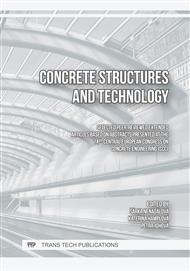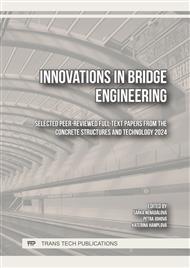p.3
p.15
p.23
p.47
p.57
p.67
p.75
p.83
Building Information Modelling of Concrete Bridges and Residential Building Structures
Abstract:
A modern „Building Information Modelling” – BIM technology is a subject of this conference paper. It is focused on BIM application in bridge and civil engineering. The computational examples presented in the paper are based on structures made of concrete. Results of BIM modelling together with FEM analyses are discussed. Presented structures’ models were prepared during university courses and as part of the international Erasmus+ project, leaded by several EU countries, in which both authors are involved. The overview of this project includes its objectives, achievements, outlining of new ideas and development of training methods.
Info:
Periodical:
Pages:
57-64
Citation:
Online since:
May 2025
Authors:
Keywords:
Price:
Сopyright:
© 2025 Trans Tech Publications Ltd. All Rights Reserved
Share:
Citation:



